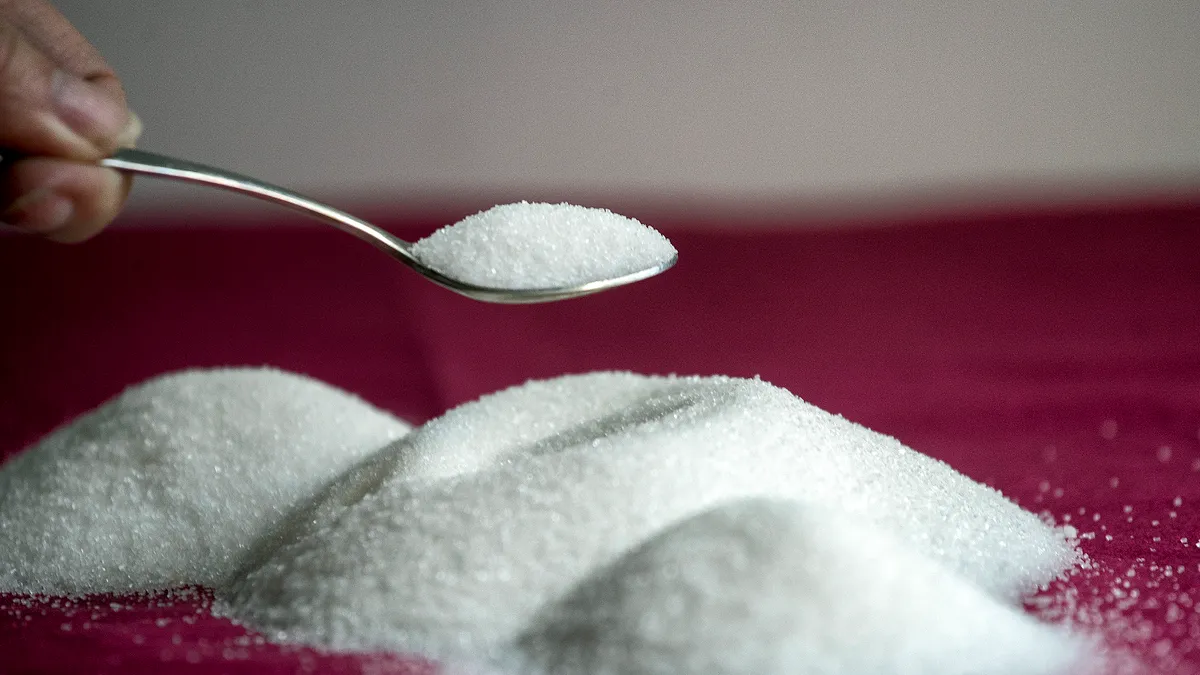Dive Brief:
- The U.S. should reconsider how it imports sugar to address high prices that "cost consumers more than producers benefit," according to an investigation from the Government Accountability Office.
- Federal agencies limit the amount of sugar entering the U.S. at a low tariff to boost prices for domestic producers. However, higher prices ultimately cost the economy around $1 billion per year, GAO said, and have led to declines in employment within confectionery manufacturing or other industries that depend on sugar.
- The agency watchdog recommended the U.S. Department of Agriculture reevaluate the effectiveness of its tariff-rate quota allocation program and determine whether other methods would better maintain adequate sugar supply while minimizing cost.
Dive Insight:
Food manufacturers say outdated U.S. sugar policies have tightened supply and raised costs for candy makers. With the program up for reauthorization at the end of next fiscal year, Congress has been weighing reforms as consumers grapple with a historic rise in food prices.
Restrictive and complicated trade measures have led U.S. manufacturers to deal with supply shocks and higher prices. Sugar has the most trade protection for any U.S. good, agricultural or otherwise, a 2017 study found.
The sugar program controls the amount of product that can be sold or imported at a low tariff rate, GAO said. It also supports sugar producers by offering them loans at established rates that act as a price floor, incentivizing producers not to sell sugar in the U.S. below the loan rate.
Current policy benefits sugar farmers and underpins increases in domestic production. Sugar producers reap an estimated $1.4 billion to $2.7 billion in additional benefits annually from the program, GAO said.
However, higher prices for manufacturers leads to a net drag on the U.S. economy. Some studies found the program costs consumers an estimated $2.5 billion to $3.5 billion per year, ultimately costing the economy approximately $1 billion per year.
U.S. consumers, including food manufacturers, paid twice the world price for sugar in 2022 and the program is also responsible for a longstanding sugar deficit, GAO said. Current methods for allocating tariff quotas also do not reflect current market conditions, leading to import shortfalls averaging 13% per year since 2006.
The Alliance for Fair Sugar Policy, which represents the confectionary and sweeteners industry, said an overhaul of current policy is necessary to give manufacturers supply chain reliability while keeping costs down. The group is also pushing for major changes to the sugar program in the upcoming farm bill.
Sugar producers, however, say current policies are needed to address a distorted world market. Global sugar costs have exceeded prices over the past 20 years, and government subsidy programs have artificially lowered prices.
Farmers also argue that current policy allows manufacturers to run just-in-time supply chains, saving them millions of dollars in storage costs. Any changes to current policy would only benefit manufacturers and not consumers, they add.
"More recent economic studies conclusively demonstrate that any savings from cheaper sugar to the big multinational corporations that buy and use sugar in their products are not passed to American consumers," said Rob Johansson, director of economics and policy analysis for the American Sugar Alliance, which represents farmers and processors. "Instead, they add to the record profits of the users.”











